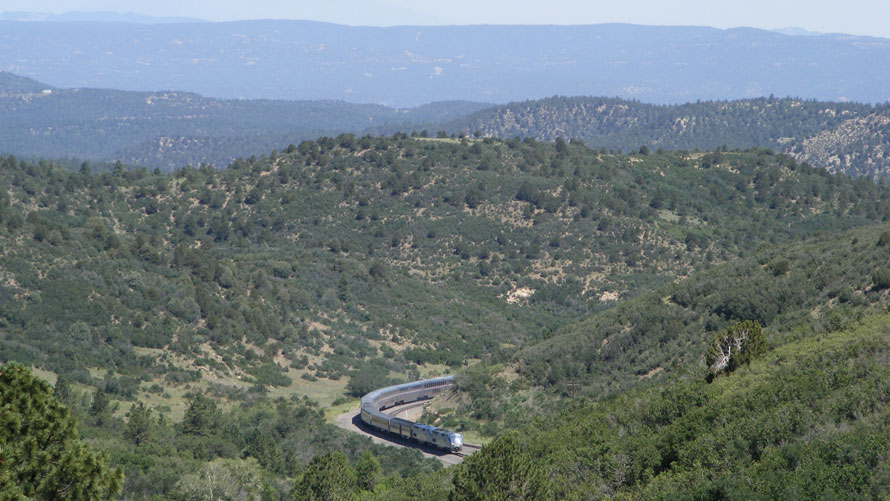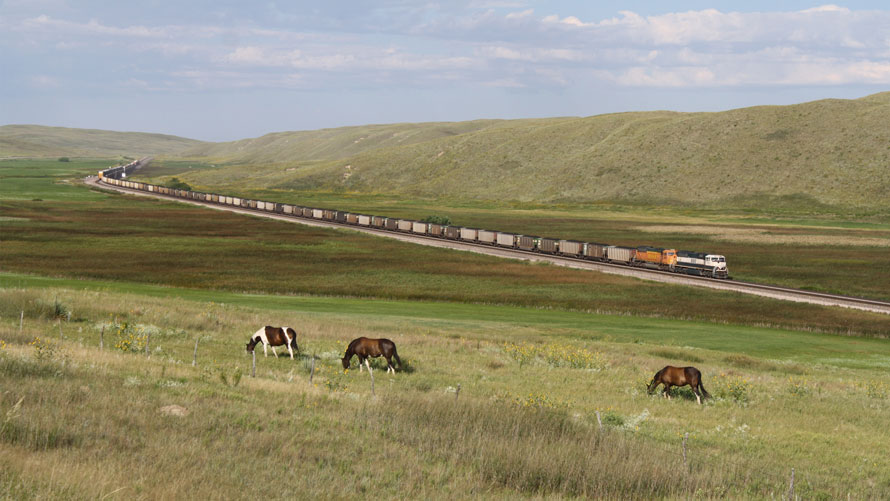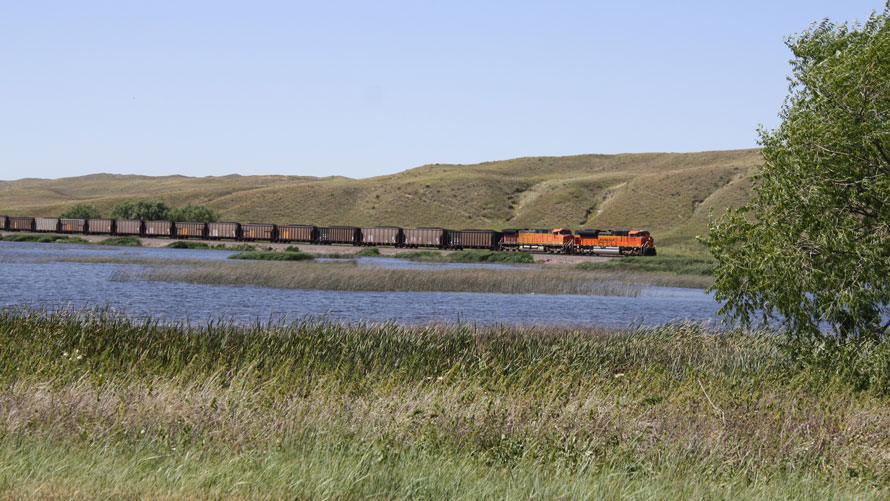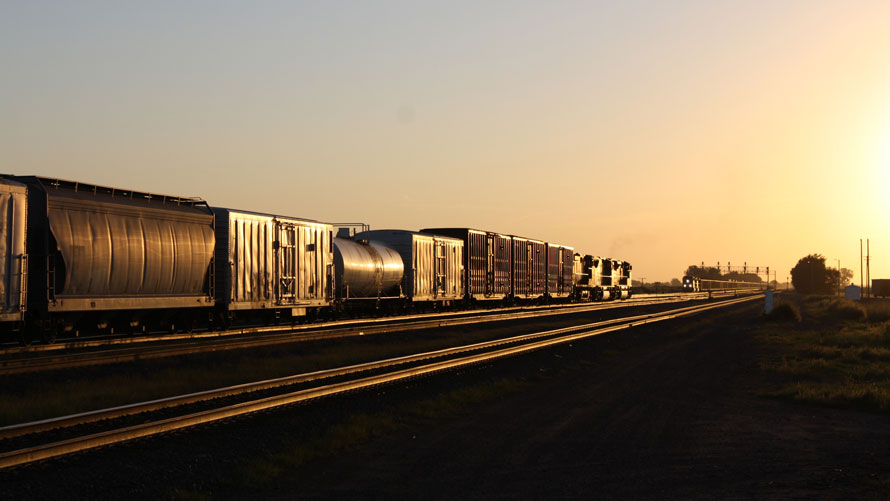There is nothing as American as the mythological old west. A staple of the silver screen since the dawn of cinema, the wide-open spaces and big sky are as much a part of Americana as baseball and apple pie.
Even in this day and age of wireless communications, superhighways and urban sprawl, the spirit of the Old West of the American mythos can still be found. The descendants of the railroads that pushed an advancing nation into the west are still as much a part of the scene as they were when pioneering photographers such as William Henry Jackson first trained their lenses on a smoking 4-4-0.

Standing at the summit of Raton Pass on the Colorado / New Mexico border, the southern Rockies can look almost as untouched by western civilization as they did a century and a half ago. Almost, in this view, but for the former Santa Fe mainline at Wooten, Colorado.
Rounding the curve and passing the site of a one-time small yard is Amtrak’s westbound Southwest Chief. Shortly the train will plunge into the tunnel at the summit of the pass, and will reemerge into daylight in New Mexico.

The Sand Hills Subdivision of the BNSF was once a lightly trafficked route of the Chicago, Burlington & Quincy. With the boom of coal from the Powder River Basin of Wyoming and Montana, the line was rebuilt into a heavy-duty double-track mainline.
Nebraska Highway 2 follows the track much of the way from Grand Island to Alliance, passing though the occasional villages and mile after mile of rolling, semi-arid countryside. The human population is sparse, and seems to be vastly outnumbered by cattle and horses.
Stopping on a hillside along Highway 2, an eastbound train of coal loads passes a trio of horses that seem to take no interest in either train or photographer. In the distance, the auto racks of a westbound manifest freight can be seen receding down the valley.
Substitute a smoke belching 4-4-0 and a few wooden cars, and it would be no stretch to expect a posse to come riding up and ask which way a gang of bandits may have headed.
The spirit of the Old West lives on, colored, perhaps by a few too many visits to the cinema.

Nebraska’s Sand Hills cover a vast area of the northwestern portion of the state. Driving along Highway 2, you can’t help thinking how tough this country would have been in the days where a trail and an ox drawn wagon would have been the only mode of transportation. A watering hole such as this one may not have been as uncommon here as in some of the desert regions to come, but it surely would have been a welcome sight.
Today it is a welcome sight for other reasons. It makes for a scenic location to photograph a loaded BNSF coal train traversing the Sand Hills Subdivision, bound for a crew change at the division point of Ravenna and then on to points east.

Once it was Hell On Wheels as construction crews hastily built westward in their rush to complete the first transcontinental railroad. Now it is the west end of North Platte’s Bailey Yard, famous for being the busiest freight yard in the world.
As the sun sinks to the horizon on a summer afternoon in 2010, an eastbound coal train from the Powder River Basin is seen approaching as another train departing the yard heeds the long-ago newspaperman’s admonition to “go West, young man.”
The scale of the operation would astound those pioneers of long ago, and the technology of today is beyond anything they could have imagined. The distance between those rails remains the same four-feet, eight-and-a-half-inches as the first iron rails put down here a century-and-a-half ago.
If the spirit of the west was to push forward into a better future, then the railroads through the region are surely an embodiment of that spirit.
Mary McPherson – Photographs and text Copyright 2021